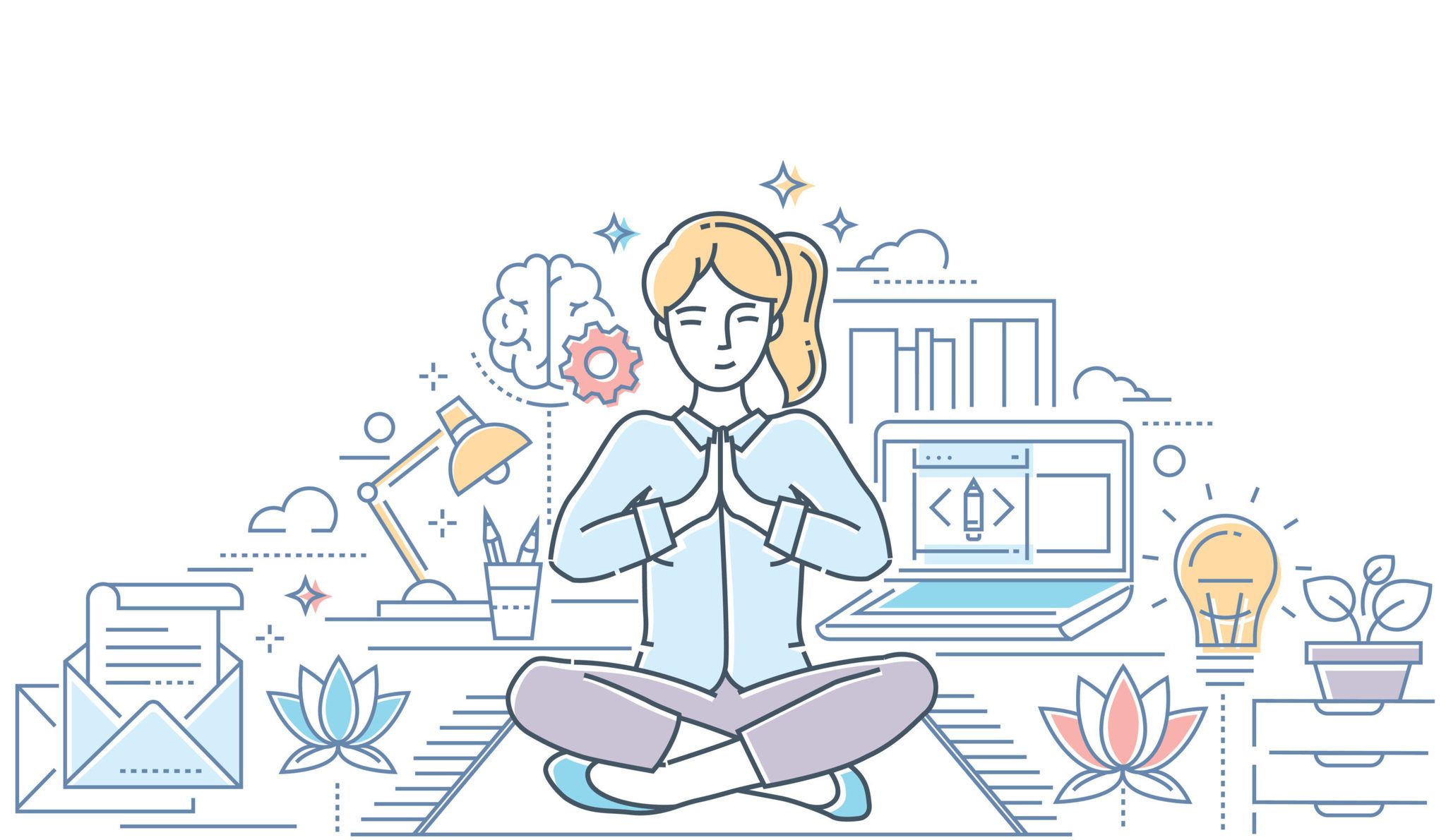
Journey of a Mindfulness Skeptic
The term mindfulness is one of the hottest buzzwords in our culture today, sparking the creation of an abundance of products with the mindfulness label attached. Influencers, thought leaders, writers, and journalists have all latched on to the term and most of us have read a headline that includes it. The COVID-19 pandemic brought the mindfulness craze to a whole new level as the world was thrown into a new paradigm seemingly overnight.
But with all of this exposure to mindfulness, how many of us can actually define it? For a long time, I thought of mindfulness and meditation as something kind of hokey – something that was for the more spiritual perhaps, or just for Yogis, or something only monks did. Meditation itself seemed daunting to me – how do people really sit there silently with their eyes closed for one minute, let alone hours or even days? It didn’t seem like something that would fit in to my lifestyle or ever benefit me. And then it happened.
One day at work, in the midst of several fires that I had to simultaneously put out, I realized my anxiety was at an all-time high. This is one of the first times I remember consciously identifying my anxiety as that and my first instinct was to get my breathing under control. So I typed ‘breathing exercises’ into Google and found a webpage that played a soothing pattern moving over and over while guiding me to breathe in, breathe out, breathe in, breathe out. After a few minutes of this, I started to feel better.
After that day, I started to research ways to reduce anxiety, and mindfulness, meditation, and breathing exercises came up a lot. So I decided it was worth a bit more research – I still wasn’t convinced, but the hype finally got me and I was intrigued.
Dictionary.com defines mindfulness as: A technique in which one focuses one’s full attention only on the present, experiencing thoughts, feelings, and sensations but not judging them: The practice of mindfulness can reduce stress and physical pain.
Ok, focusing on the present, I can see why that could be helpful. Experiencing thoughts, feelings and sensations but not judging them – I can see how that could reduce anxiety, but not really sure how you are supposed to do that? I mean, judging is basically built into our culture. The practice of mindfulness can reduce PHYSICAL pain? No way. I don’t buy that for one second. How can doing nothing reduce physical pain?
I figured if I was really going to give this a go, I’d need to learn how to practice mindfulness. How to meditate, how to be in the present, how to experience thoughts, feelings, and sensations without judging them. And of course, as for everything in 2020, there’s an app for that. Hundreds of apps actually. I had heard many good things about Calm, so that’s what I opted to try first.
One of the things that surprised me the most as I started to look through the app is the length of the guided meditations and breathing exercises – most offer short sessions, as little as one minute, and longer sessions – up to 30 min+. My original understanding of meditation was that it took a lot of time – but here were several options that I could easily fit into my schedule whenever I wanted.
The other thing I noticed is that they constantly referred to mindfulness as a practice. It is something that is unique to each person, and the methods that work for you may be different than the methods that work best for me. For some, meditation may be particularly helpful, while for others a focus on gratitude may be more beneficial. There are many different ways to practice mindfulness, and part of the journey is finding what works for you. The Calm app offers many different ways to practice, which made it an ideal option for me to explore.
As I started to do guided meditations, I realized that there was a huge focus on breathing. By focusing on your breath, you can help calm your mind and focus on being present in the moment. As you continue to do guided meditations, eventually you’ll be able to use these techniques throughout the day to help you remain in a calm and present state of mind. A specific type of meditation known as a body scan was particularly intriguing to me. It has you focus on your breathing and pushing your breath into specific areas of your body. I know, I know – it sounds totally ridiculous if you’ve never done it. But this is where I started to actually feel the effects of pain relief. By focusing on different areas of the body – like your back for example, and really tuning into the pain that you feel, you can use your breath to help release some of the pain. I get that it totally sounds too good to be true, and of course it won’t work for every situation, but I surprisingly found success here and was able to release tension I didn’t even realize I had.
As I researched more about mindfulness, I realized that the history of mindfulness goes way beyond the recent cultural phenomena. It has deep roots in Hinduism and Buddhism and the practice of being present, focusing on your thoughts, your body, and your breathing have been around for thousands of years. It’s no wonder I had an instinct to focus on my breathing in that first anxiety episode!
While everyone’s practice looks different, and will evolve over time, I’ll share where I’m at right now. I find it helpful to start the day with a short 3-minute meditation or body scan to get me in the right headspace for the day. I also focus on my sleep routine as I find my thoughts love to race right as I’m meant to be winding down for the day. Using the Calm app, I typically do a 15-minute deep sleep release meditation, followed by one of my favorite sleep stories, and then set my scene preferences in the app so that waterfall sounds stay on for a few hours. This helps me relax, calm my thoughts, and get to sleep faster and stay asleep longer during the night. Starting and ending my day with my mindfulness practice has been life changing for me.
I still have days where I can’t seem to steady my thoughts, where I feel like I just can’t get in to a meditation or focus. And that’s ok. Part of a mindfulness journey is to be ok with not being perfect. The benefits truly are in the journey and the path that you take. Beyond meditations, journaling is a practice that some find very beneficial. I’ve tried it, but have yet to make it a habit. It can be a simple as writing down three things you are grateful for each day, or three ways you practiced self-care. It’s no surprise that apps can help you here too if that seems more appealing to you.
My recommendation for anyone looking to explore the practice further is to find an app give it a try. Start with short, guided meditations or body scans just to see what it’s like. But make sure that you give it your all and that you are 100% present during these sessions. Even a one-minute meditation can have a big impact on your outlook for the day, or your ability to calm yourself after a stressful encounter. So start small, try different practices like meditations, breathing exercises, gratitude practices, journaling and more to find what works for you.
I can say that I’ve gone from a mindfulness skeptic to a believer over time. My practice helps me to bring my best self to work, my friends, and my family each day. And there’s no better outcome than that.






